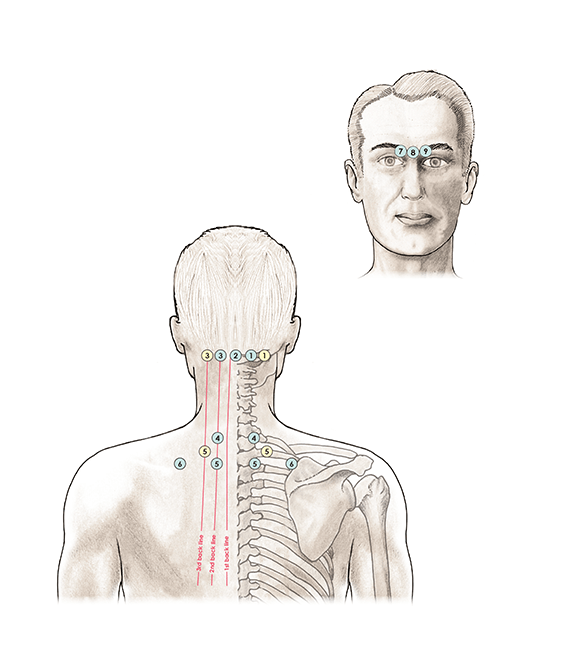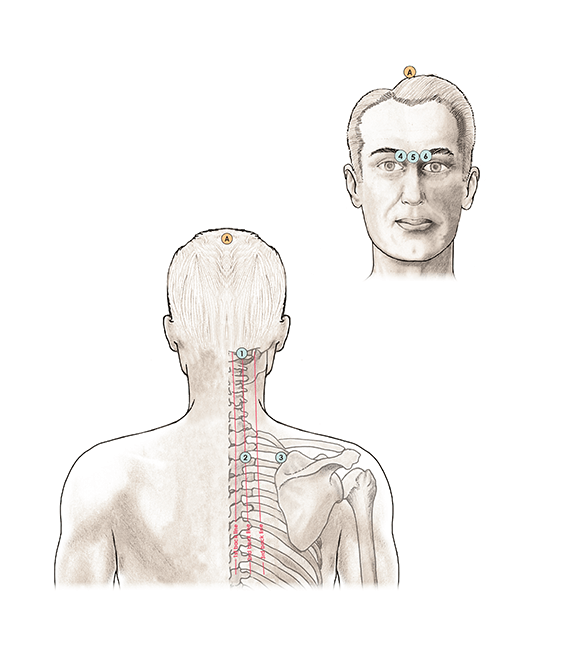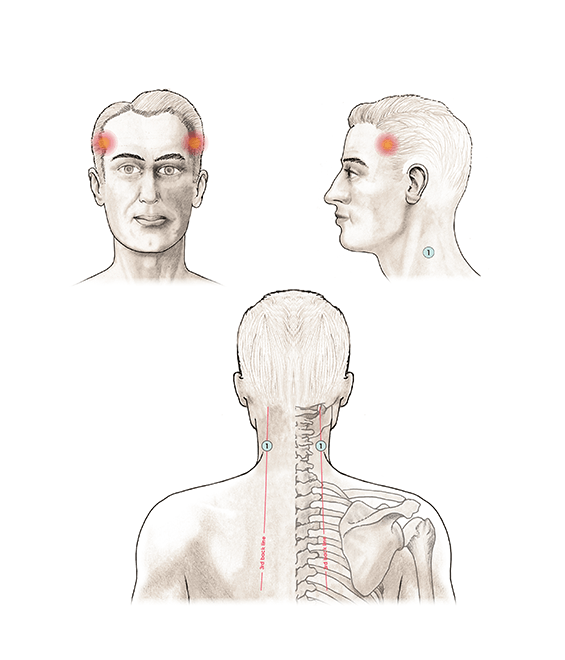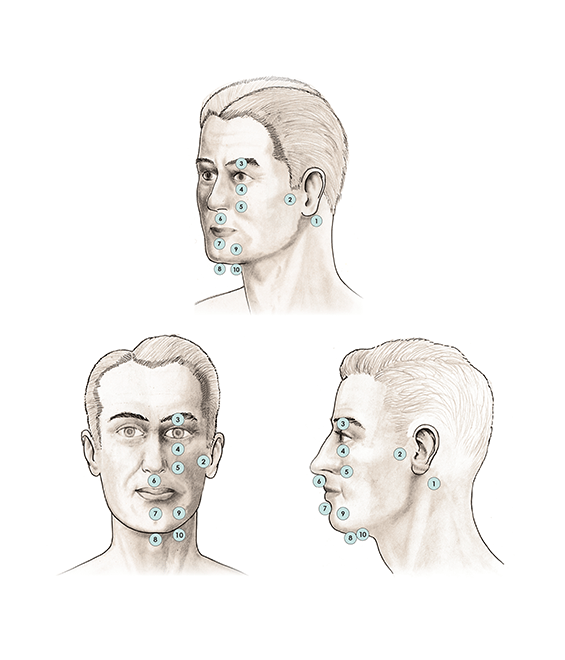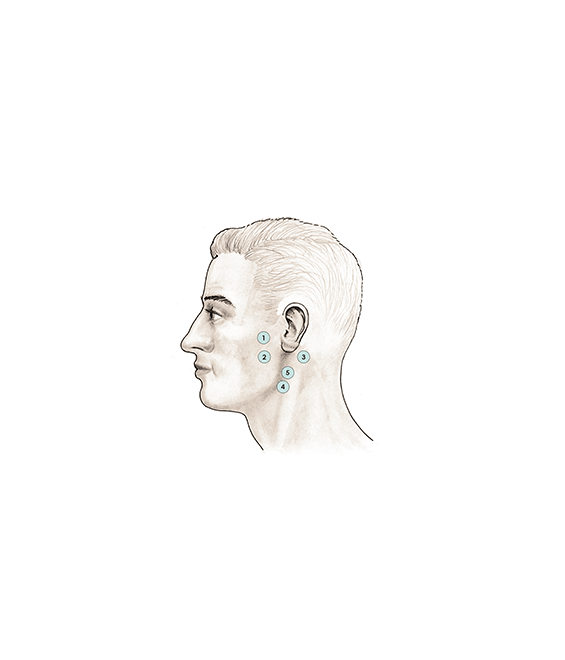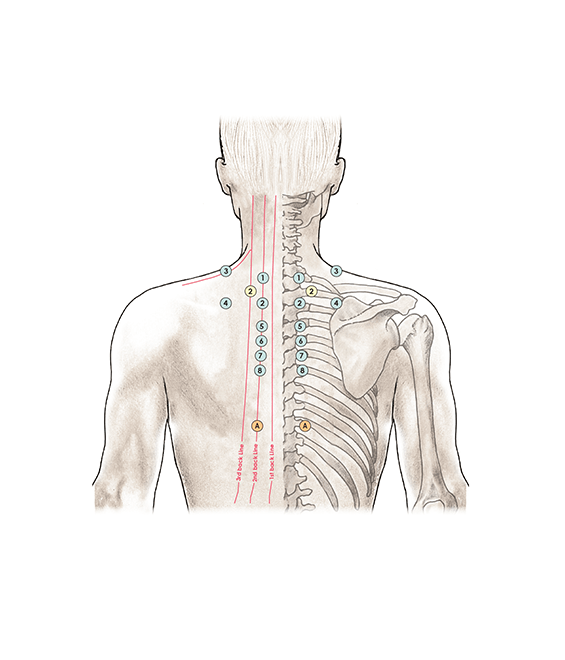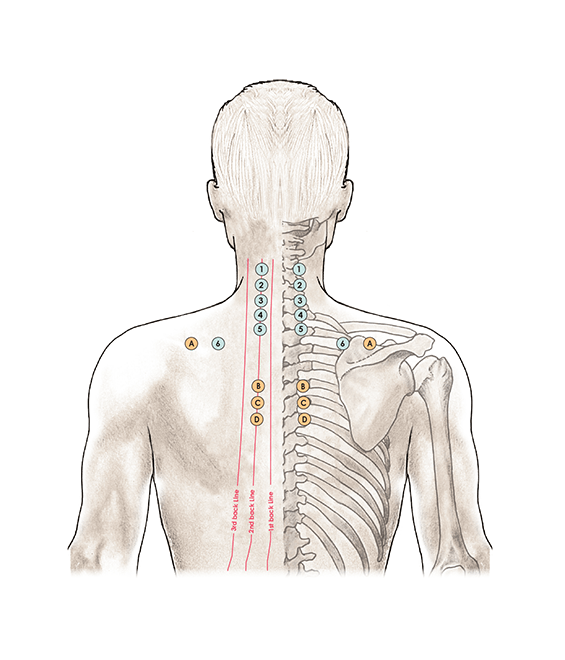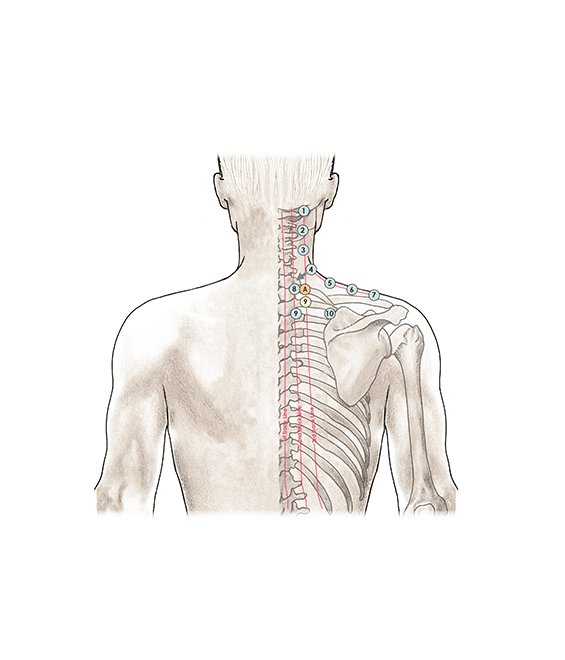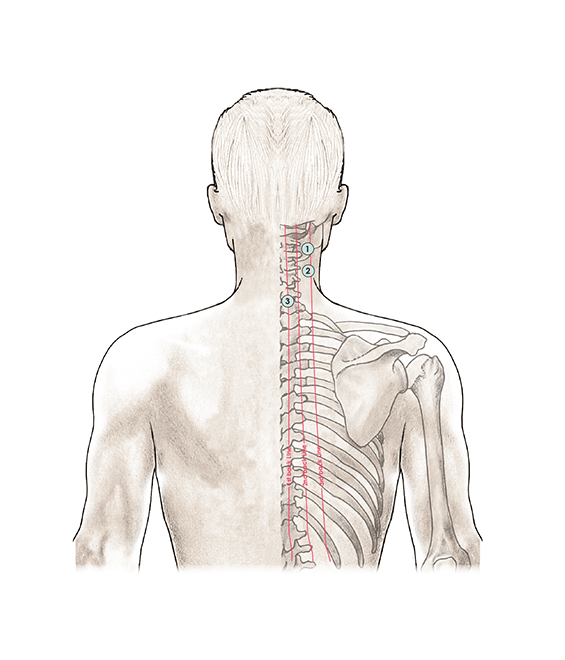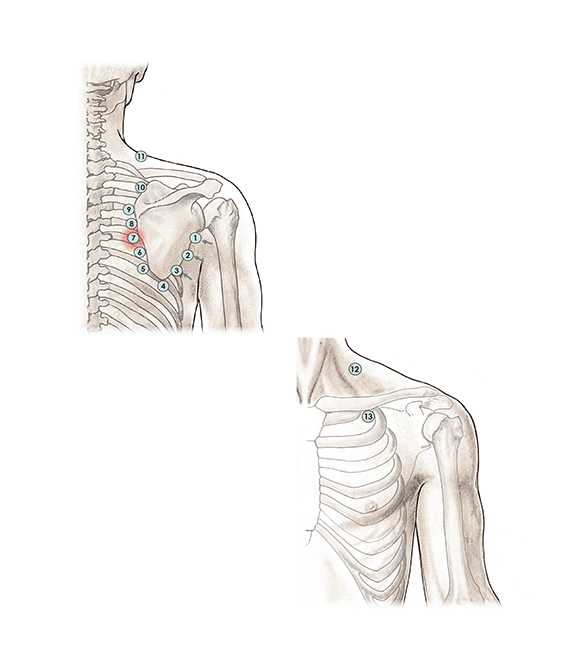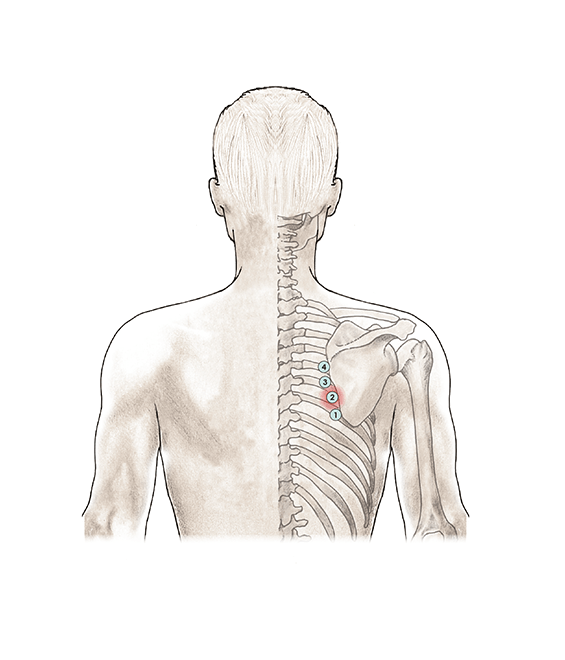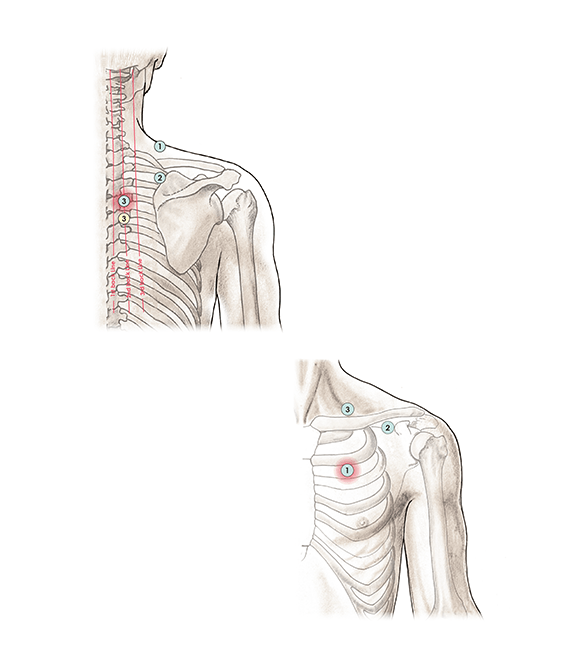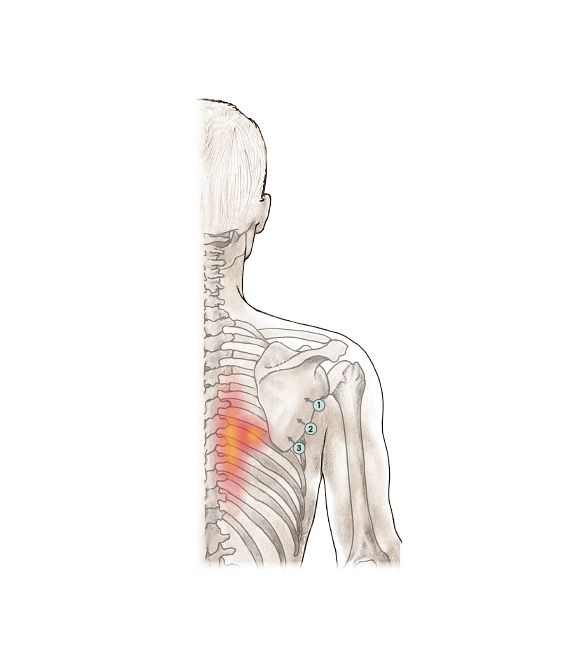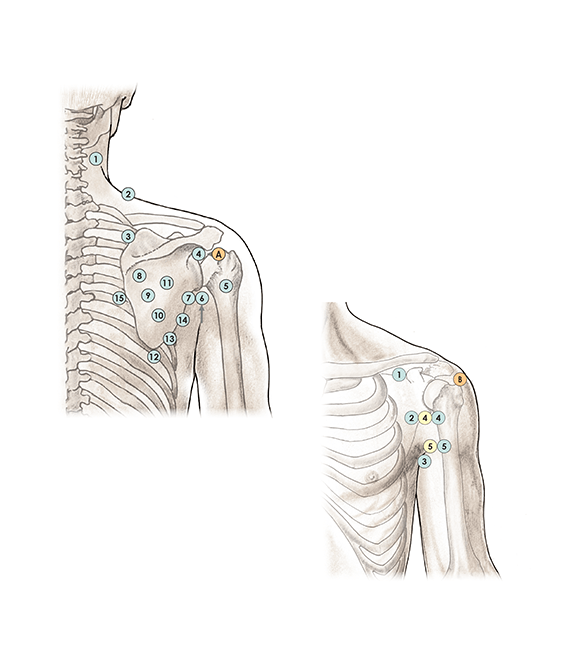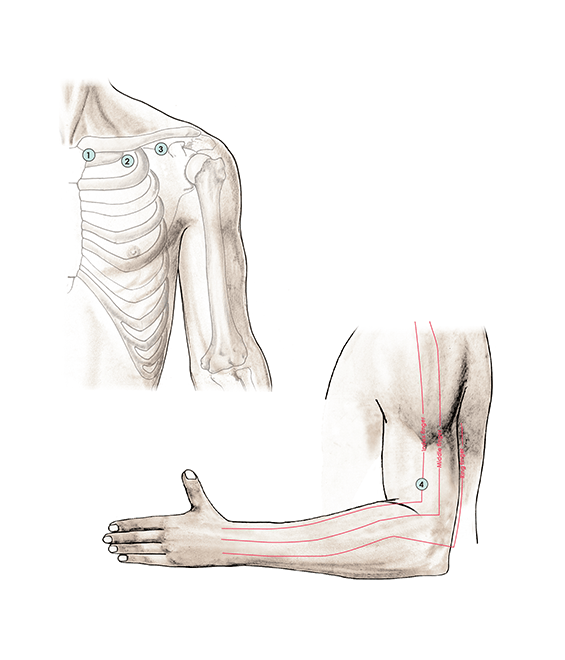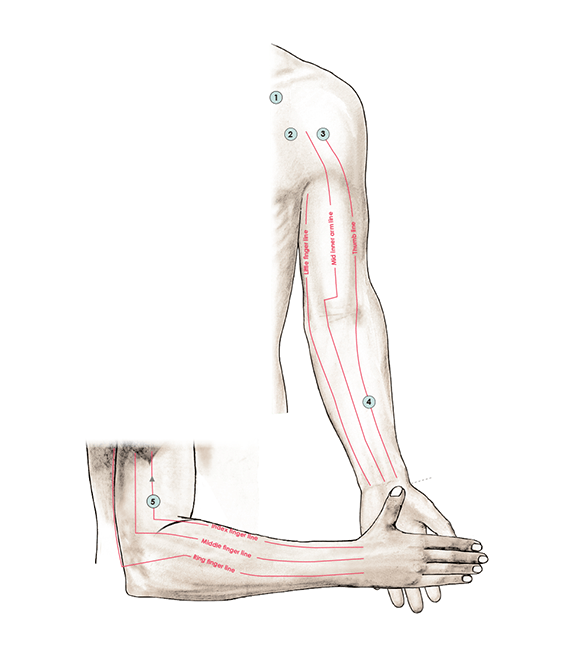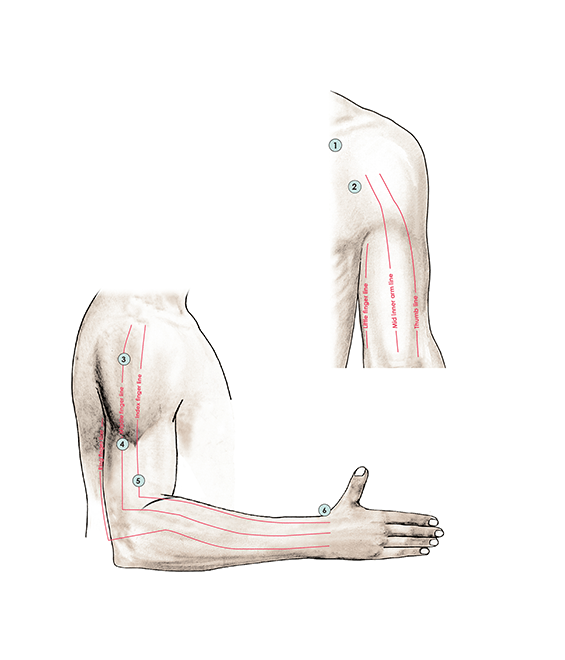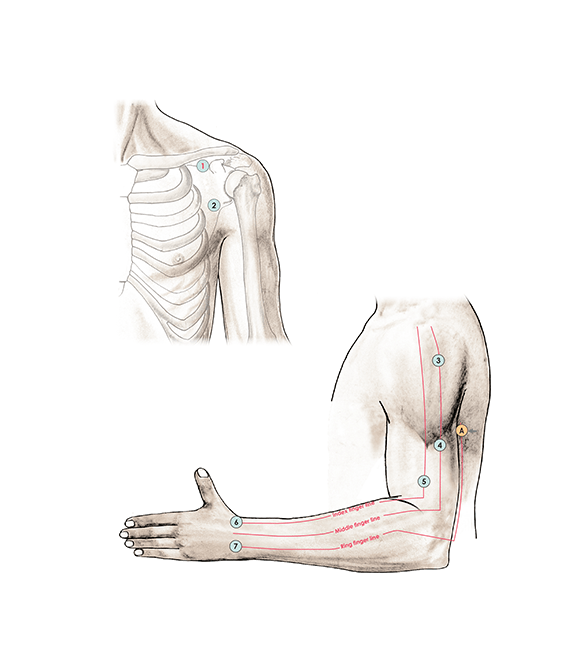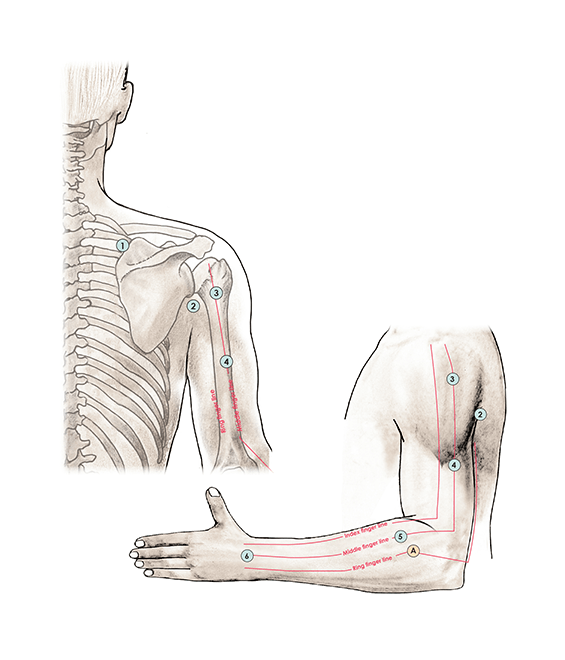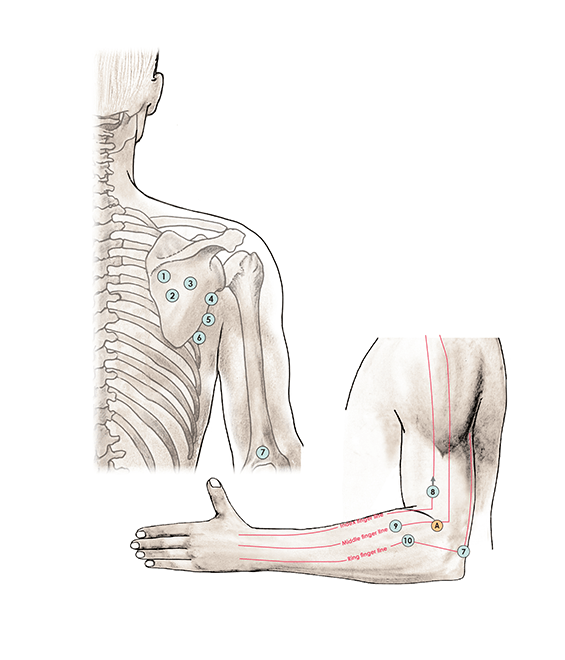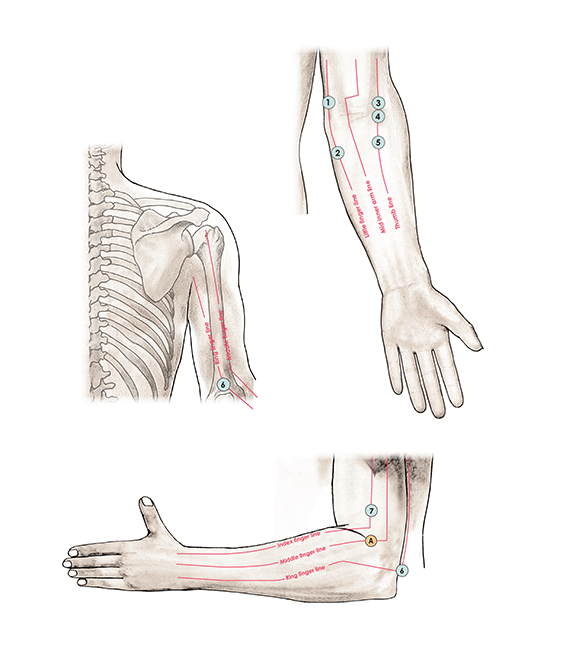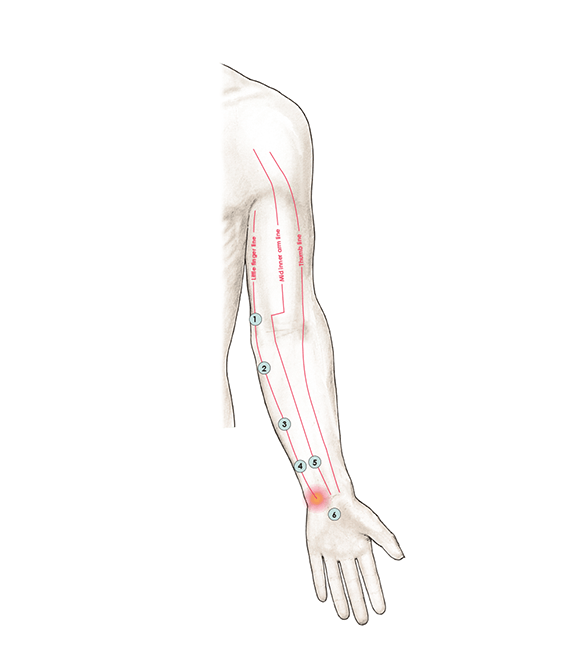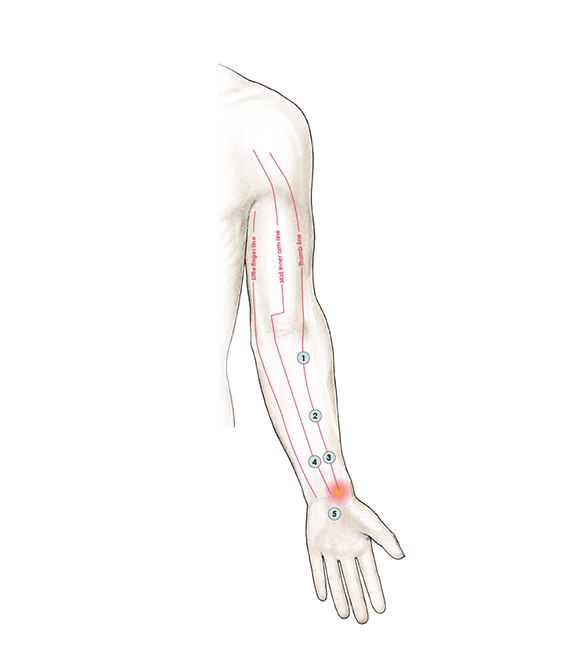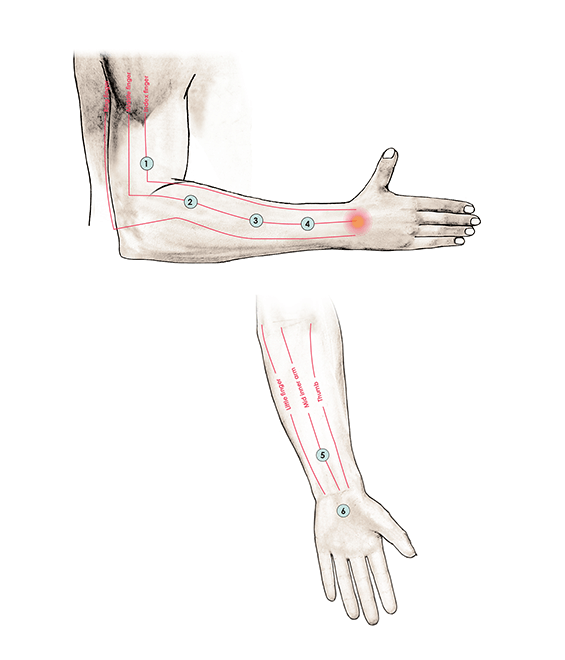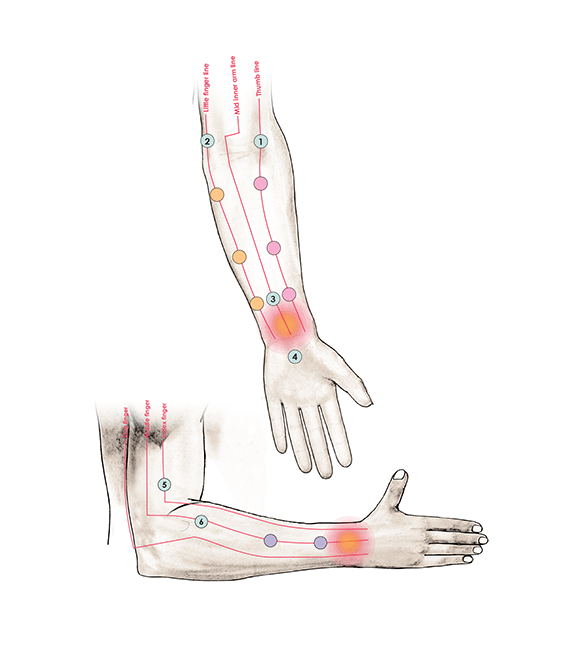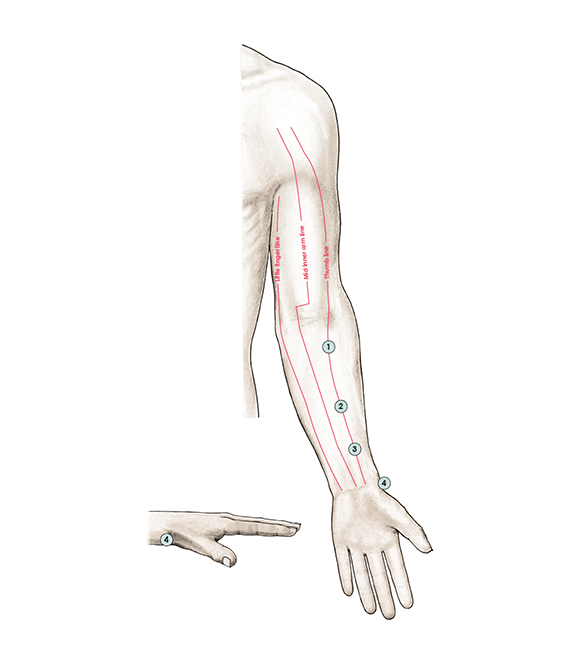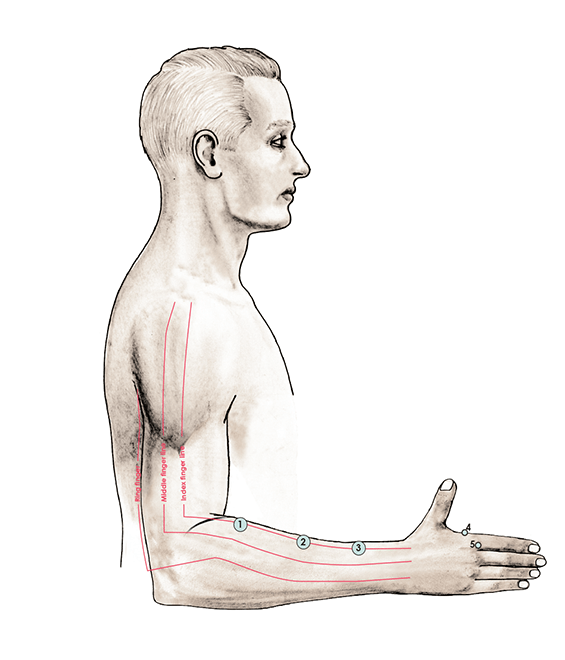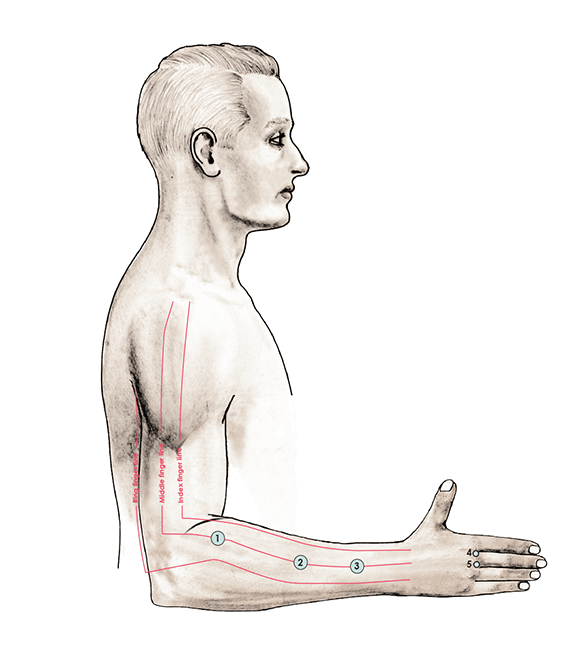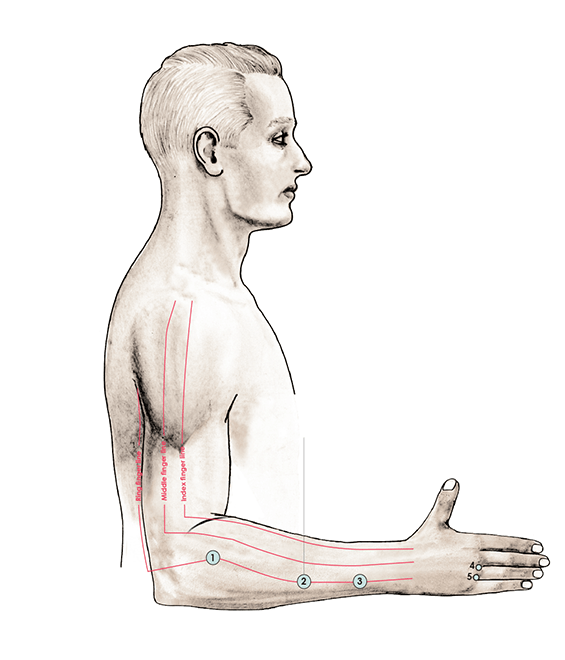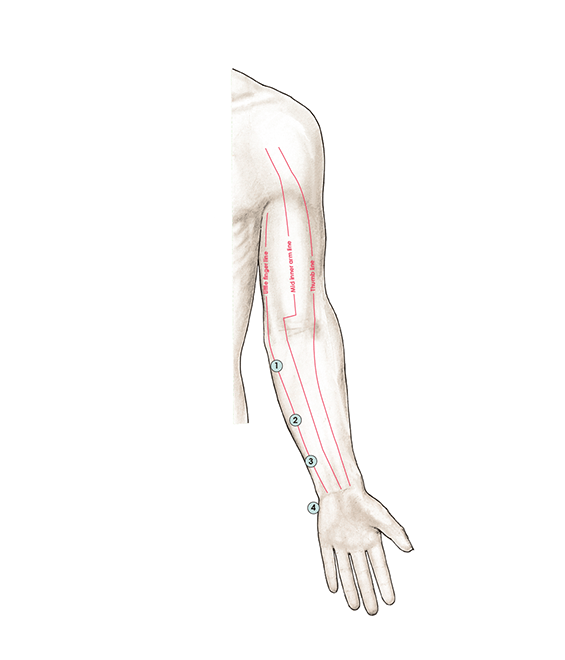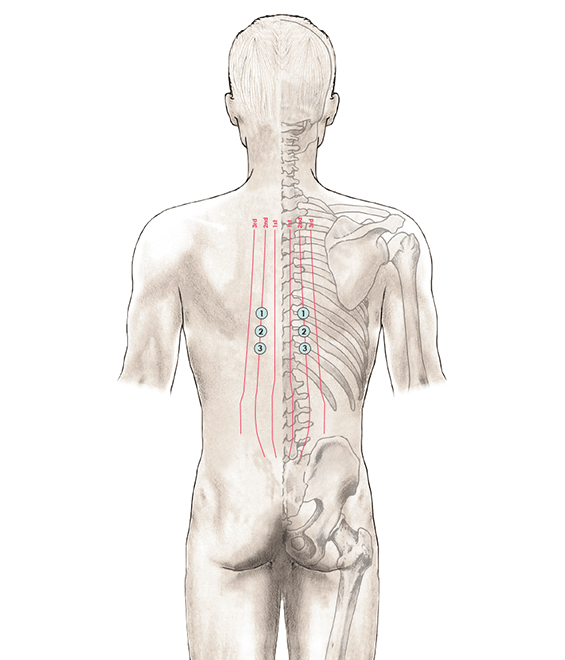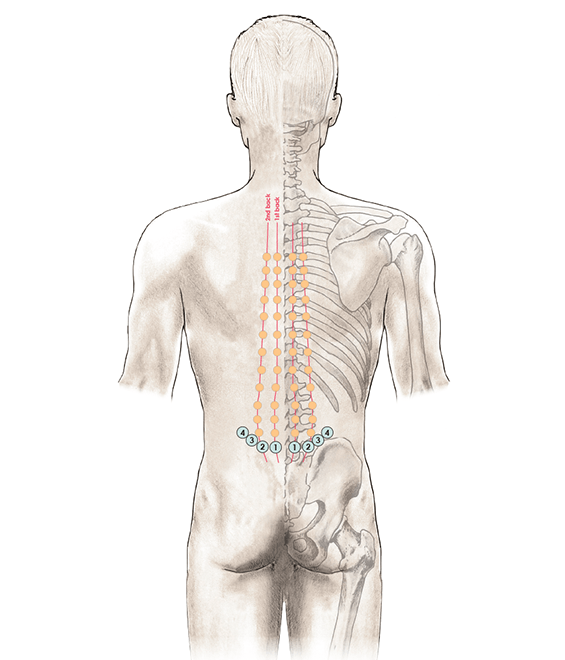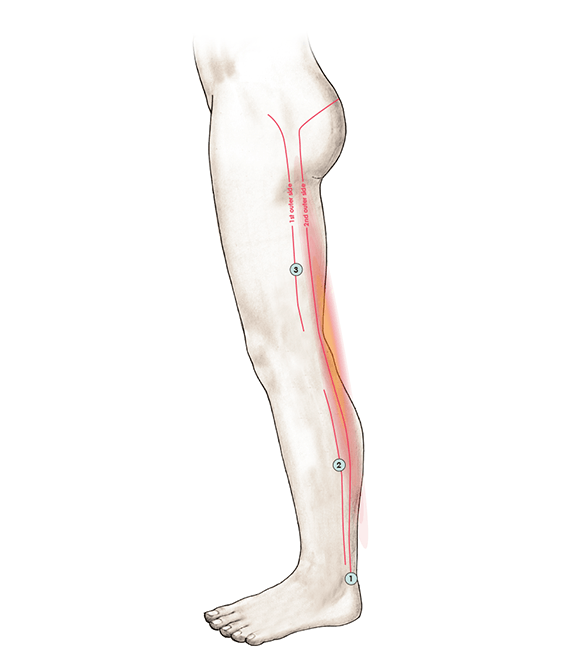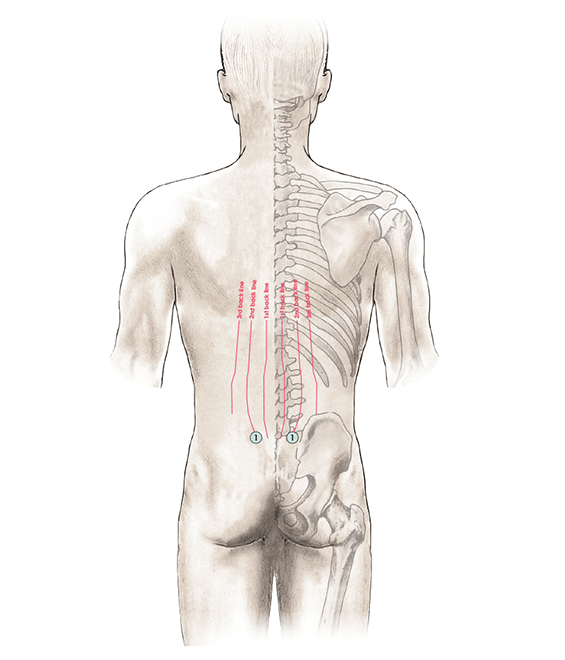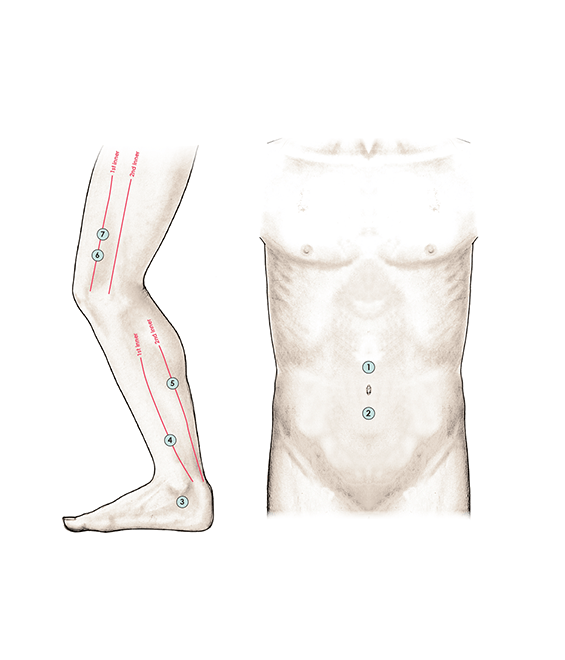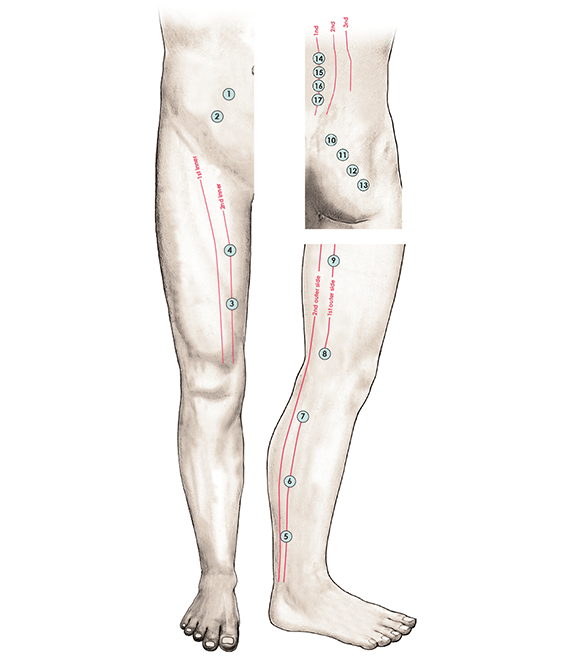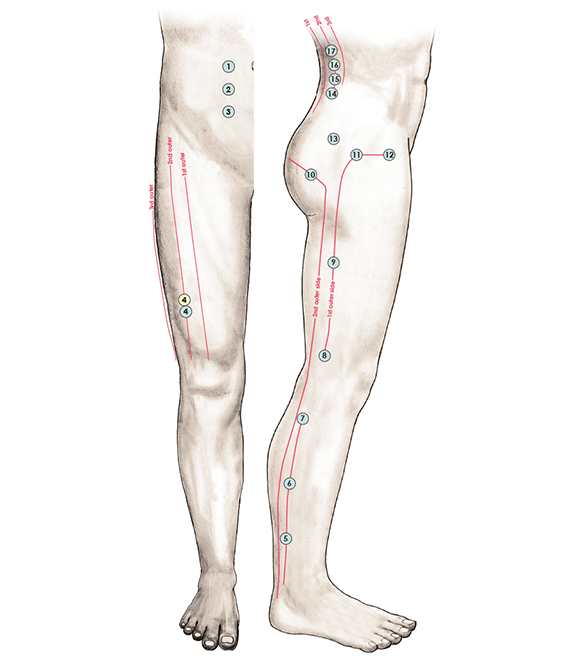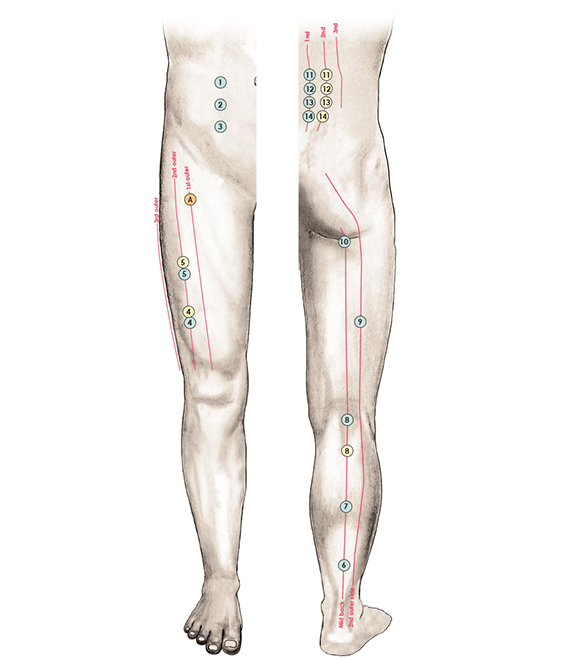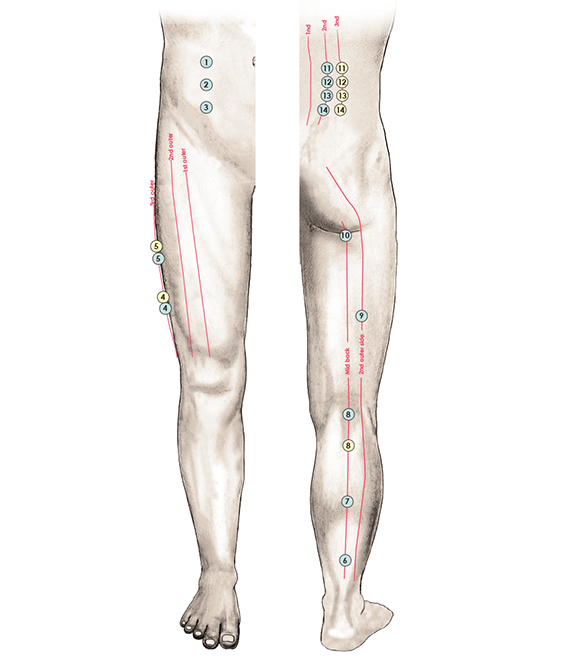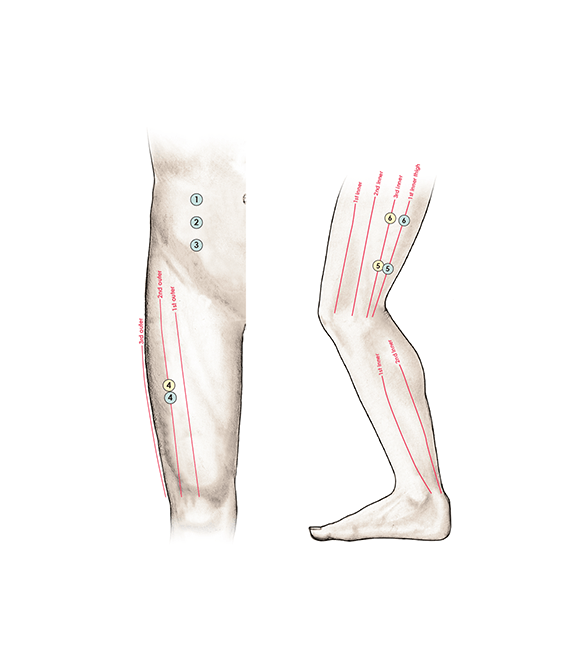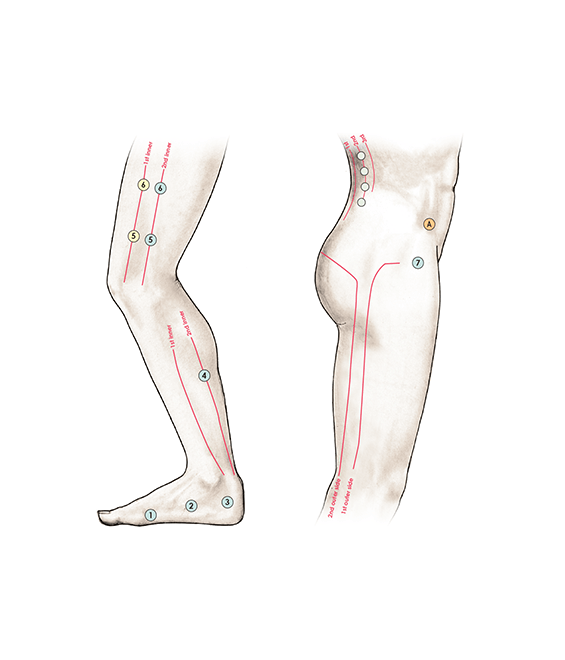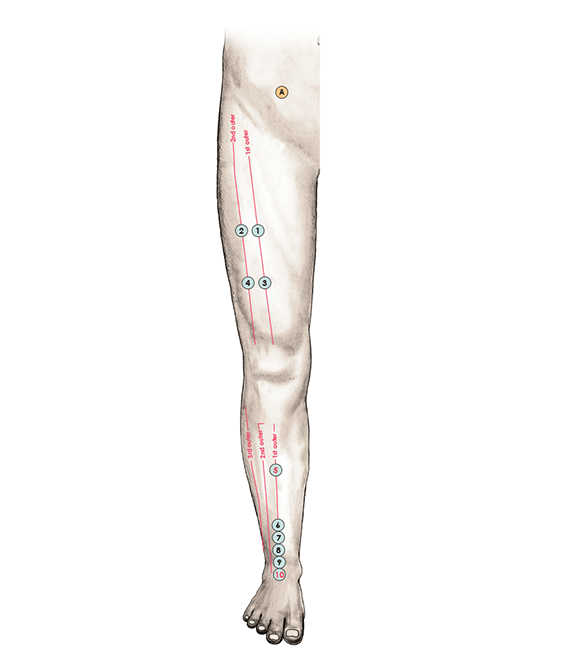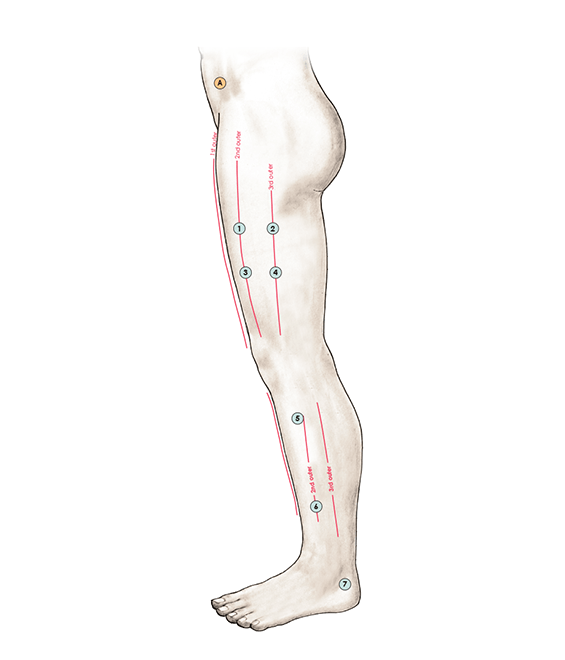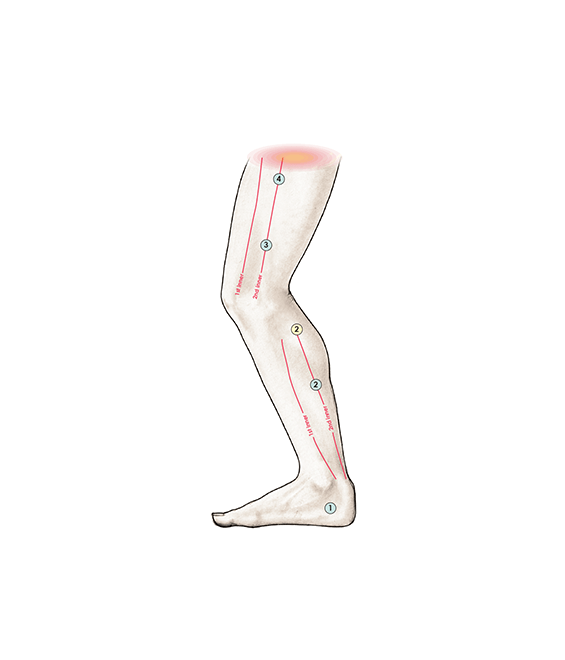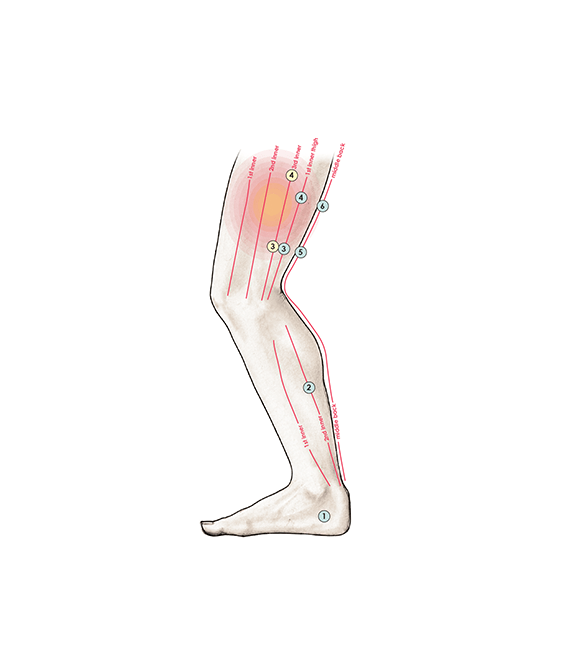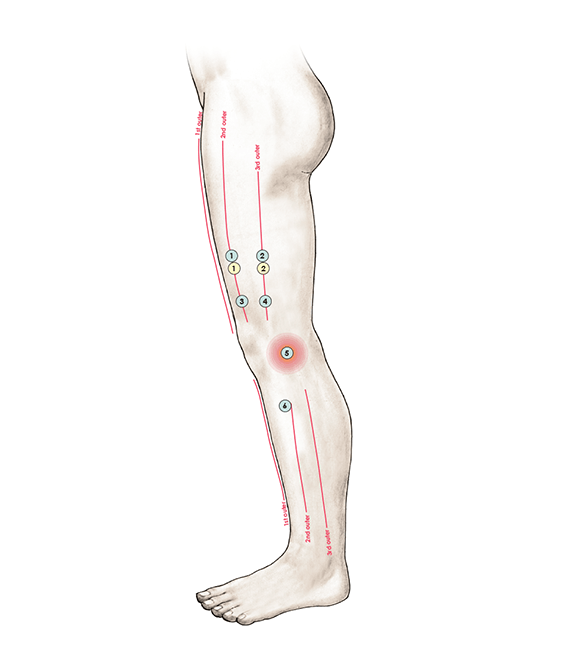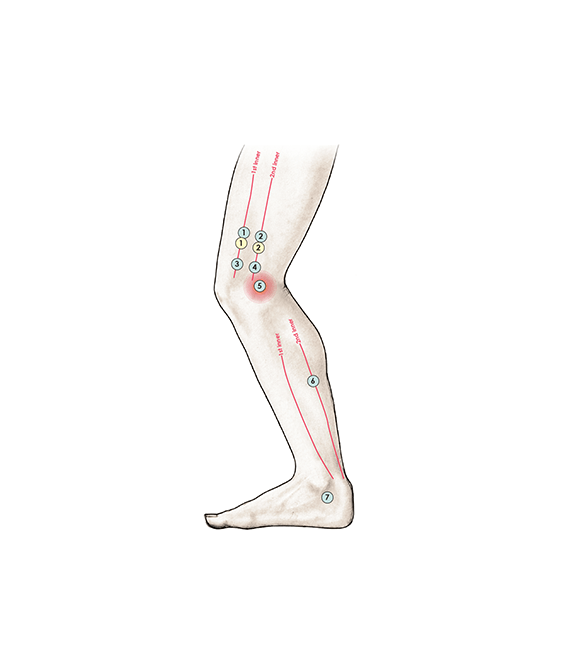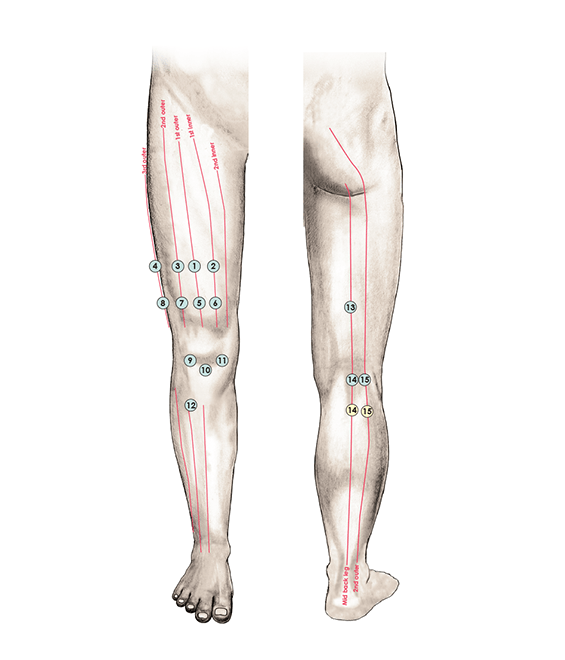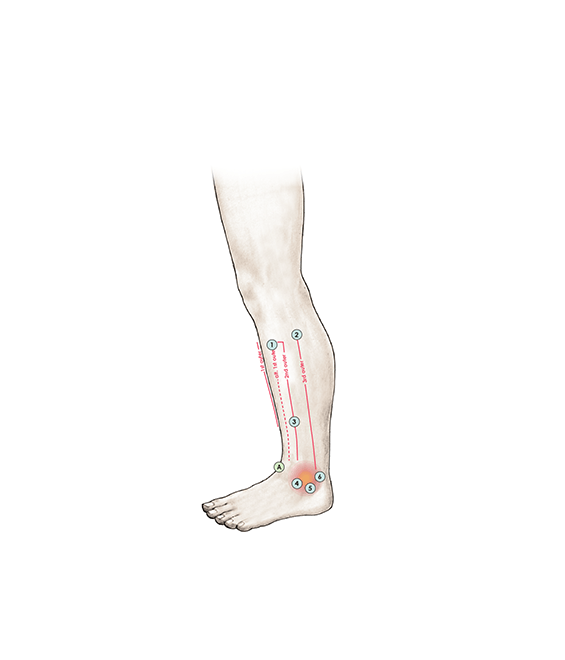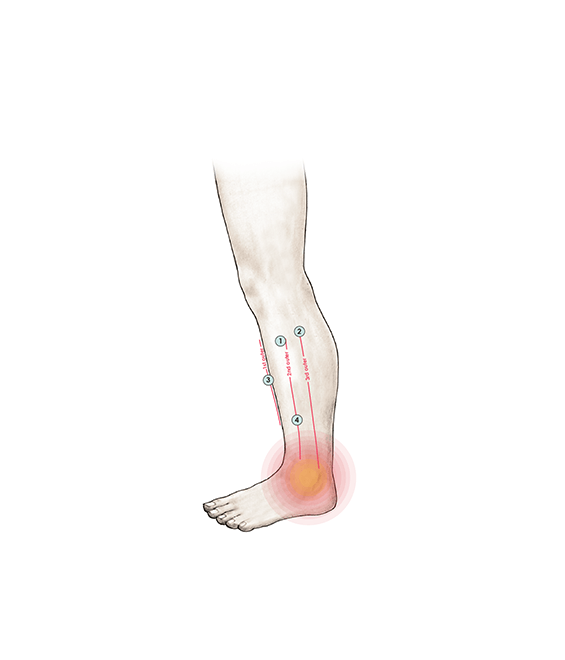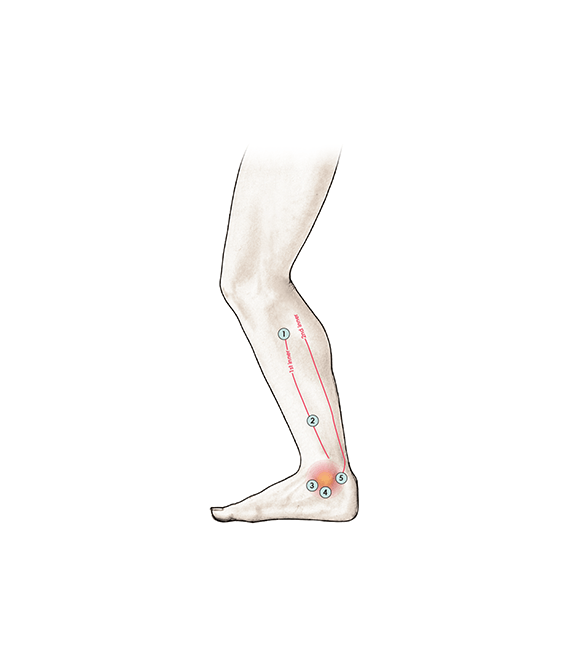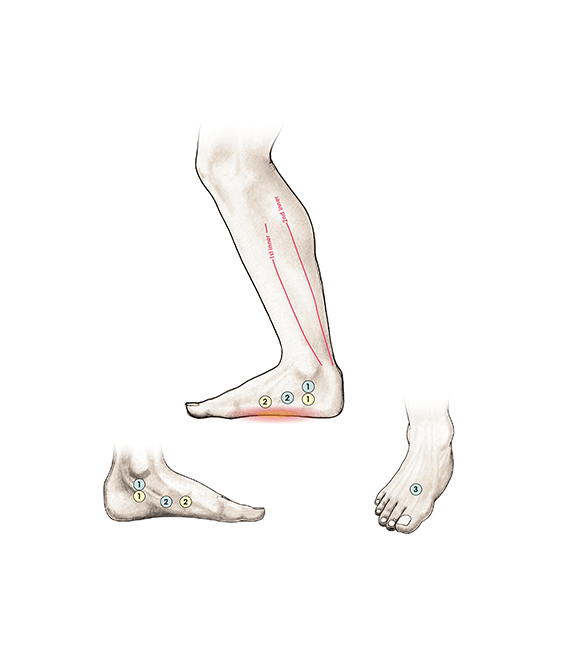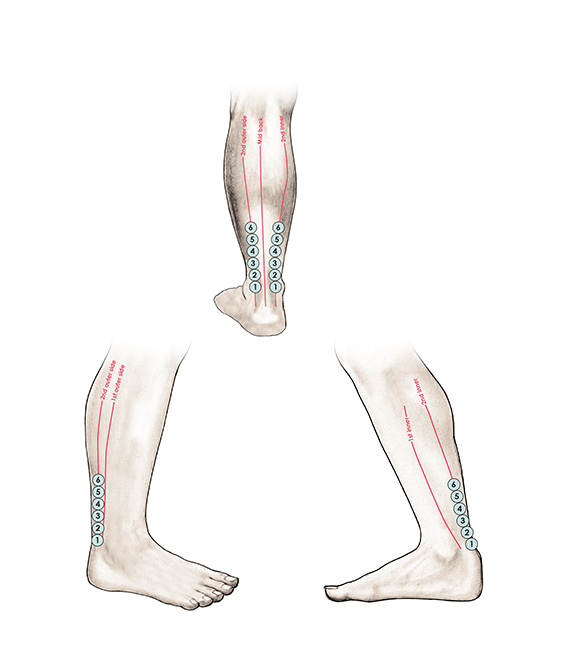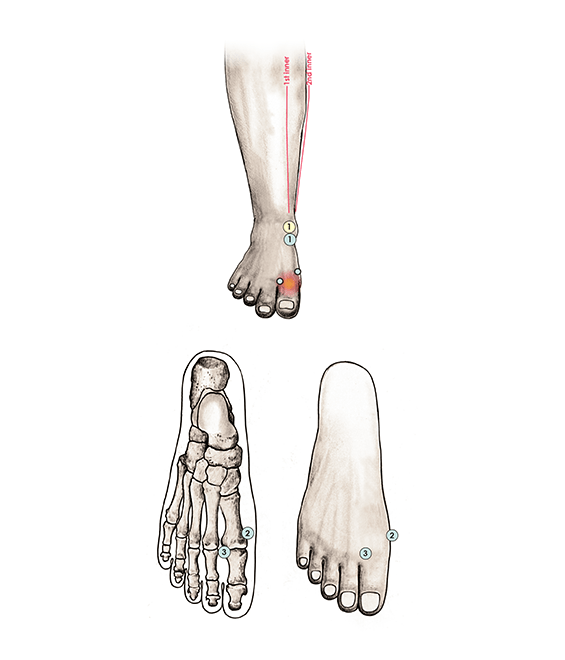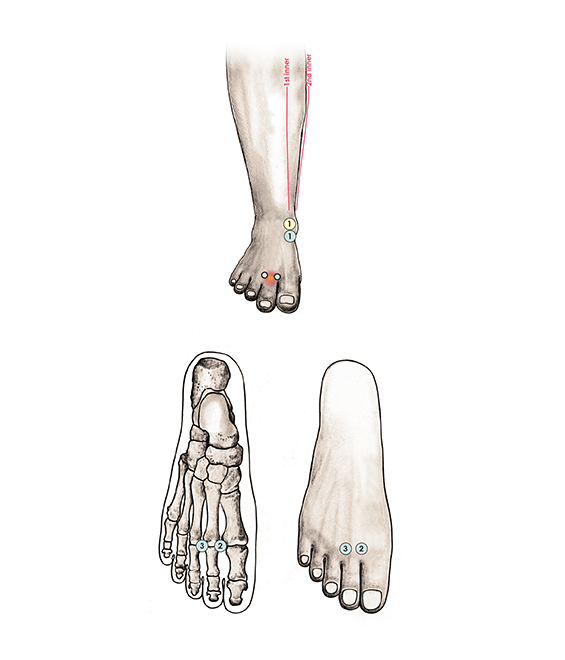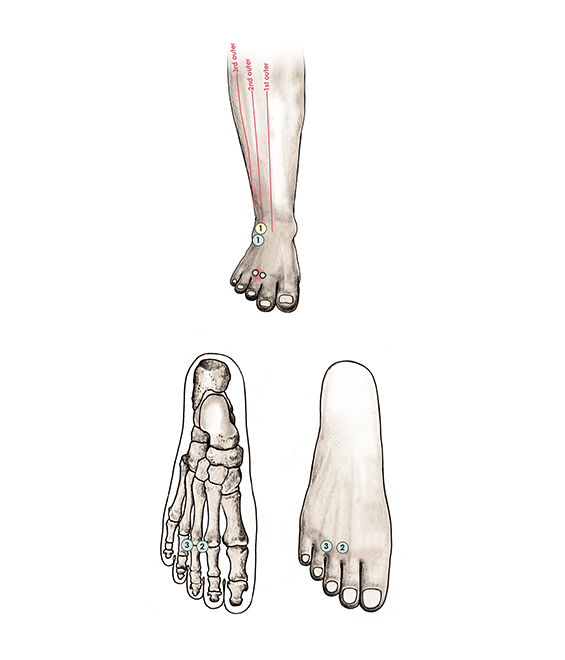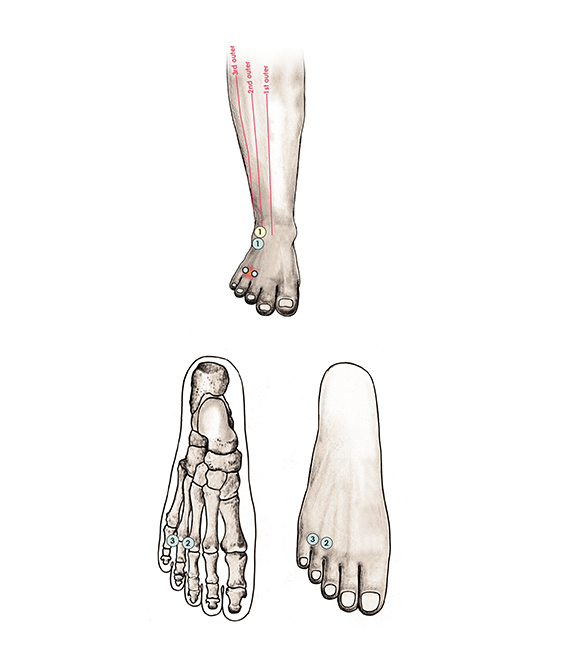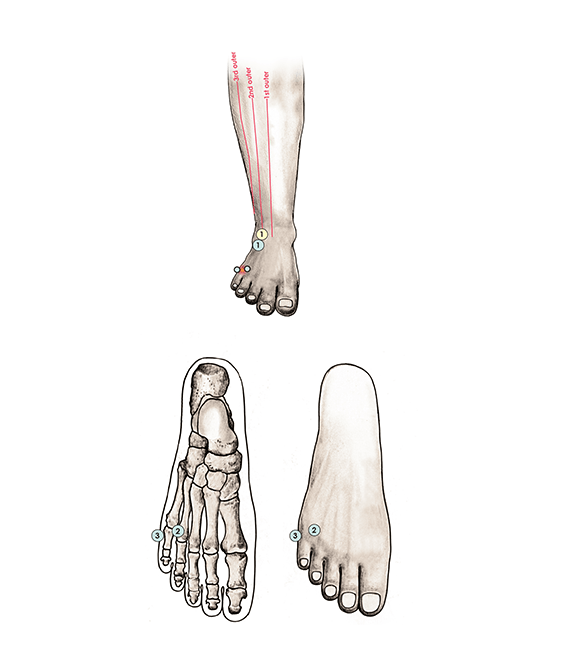Orthopedic Pathologies
The routines in the book Thai Acupressure, treat many of the most common orthopedic pathologies that can be treated by a manual therapeutic method. They treat soft tissue ailments such as muscular hypertonicity and myofascial trigger points, muscular weakness, muscle strains, tendinous disorders such as tendinosis, tendonitis and tenosynovitis, ligament sprains, osteoarthritis, neuro-vascular entrapments and neural tensions. The routines cannot treat serious pathologies such as fractures, joint dislocations, orthopedic ailments created by viral or bacterial diseases nor by internal or systemic diseases. One can study treatment routines based on point combinations at different schools and with different practitioners in Thailand.
Thai acupressure routines may treat some conditions of a pathology but may not treat other conditions and symptoms of the same pathology. A herniated spinal disc for instance will create different conditions depending on the degree of herniation, its location and its direction. The Thai routines may treat some of these conditions very effectively but cannot treat other possible conditions of this same pathology. On the other hand a few different pathologies will be treated by a single one acupressure treatment routine. The routine “Shoulder pain when raising the arm” for instance, is used very effectively in the treatment of several different shoulder pathologies such as subacromial bursitis, calcific tendonitis, rotator cuff tears or tendinosis, shoulder impingement syndrome, and bicipital tendinosis or tenosinovitis.
In the left column of the following table is the list of the 60 Thai treatment routines (that are presented in the book & Video guide) and in the right column a list of the possible underlying pathologies these routines may treat.
- THAI ROUTINES FOR HEADACHEPossible underlying pathologies
- THAI ROUTINES FOR FACEPossible underlying pathologies
- THAI ROUTINES FOR NECKPossible underlying pathologies
- THAI ROUTINES FOR SHOULDERPossible underlying pathologies
- THAI ROUTINES FOR ARMPossible underlying pathologies
- THAI ROUTINES FOR ELBOWPossible underlying pathologies
- THAI ROUTINES FOR WRISTPossible underlying pathologies
- THAI ROUTINES FOR FINGERSPossible underlying pathologies
- THAI ROUTINES FOR BACKPossible underlying pathologies
- THAI ROUTINES FOR LOWER BACKPossible underlying pathologies
- THAI ROUTINES FOR HIPPossible underlying pathologies
- THAI ROUTINES FOR LEGPossible underlying pathologies
- THAI ROUTINES FOR KNEEPossible underlying pathologies
- THAI ROUTINES FOR ANKLEPossible underlying pathologies
- THAI ROUTINES FOR FOOTPossible underlying pathologies
- THAI ROUTINES FOR TOESPossible underlying pathologies
Routine
1
|
Muscular contraction headaches Vascular (congestive) headaches |
Routine
2
|
Muscular contraction headaches Vascular (congestive) headaches |
Routine
3
|
Muscular contraction headaches |
Routine
4
|
Muscular contraction headaches |
Routine
5
|
Facial nerve disorder (Bell's palsy) |
Routine
6
|
Temporomandibular joint disorders (TMJ) |
Routine
7
|
Muscle strain Spinal ligament sprain Hypertonicity and myofascial trigger points Herniated nucleus pulposus Osteoarthritis of the cervical spinal joints (spondylosis) Cervical facet syndrome Cervical spinal stenosis Torticollis (wryneck) Kyphosis (hunchback) Forward head posture Military neck |
Routine
8
|
Spinal ligament sprain Hypertonicity and myofascial trigger points Herniated nucleus pulposus Cervical facet syndrome Osteoarthritis of the cervical spinal joints (spondylosis) Cervical spinal stenosis Kyphosis (hunchback) Forward head posture Military neck |
Routine
9
|
Hypertonicity and myofascial trigger points Muscle strain Spinal ligament sprain Cervical facet syndrome Osteoarthritis of the cervical spinal joints (spondylosis) |
Routine
10
|
Hypertonicity and myofascial trigger points Kyphosis (hunchback) |
Routine
11
|
Muscular hypertonicity and myofascial trigger points Muscle strain Nonspecific neurovascular entrapments Kyphosis (hunchback) Scoliosis |
Routine
12
|
Muscular hypertonicity and myofascial trigger points Muscle strain Nonspecific neurovascular entrapments Kyphosis (hunchback) Scoliosis |
Routine
13
|
Muscular hypertonicity and myofascial trigger points Nonspecific neurovascular entrapments Costovertebral joints pain Kyphosis (hunchback) Scoliosis |
Routine
14
|
Muscular hypertonicity and myofascial trigger points Nonspecific neurovascular entrapments Scoliosis Kyphosis (hunchback) |
Routine
15
|
Adhesive capsulitis (frozen shoulder) Subacromial bursitis Calcific tendinitis Rotator cuff tears or tendinosis Shoulder impingement syndrome Bicipital tendinosis or tenosinovitis SLAP lesions (glenoid labrum injuries) Osteoarthritis of the glenohumeral joint Acromioclavicular sprain Post shoulder separation Post shoulder dislocation or subluxation Muscular hypertonicity and myofascial trigger points Nonspecific neurovascular entrapments Scoliosis Kyphosis (hunchback) |
Routine
16
|
Adhesive capsulitis (frozen shoulder) Calcific tendinitis Shoulder impingement syndrome Bicipital tendinosis or tenosinovitis SLAP lesions (glenoid labrum injuries) Muscular hypertonicity and myofascial trigger points Nonspecific neurovascular entrapments Acromioclavicular sprain Kyphosis (hunchback) |
Routine
17
|
Thoracic outlet syndrome (TOS) Non specific neural and/or vascular entrapment Kyphosis (hunchback) Muscular hypertonicity Myofascial trigger points |
Routine
18
|
Thoracic outlet syndrome (TOS) Non specific neural and/or vascular entrapment Muscular hypertonicity Myofascial trigger points Kyphosis (hunchback) |
Routine
19
|
Thoracic outlet syndrome (TOS) Non specific neural and/or vascular entrapment Muscular hypertonicity Myofascial trigger points Kyphosis (hunchback) |
Routine
20
|
Thoracic outlet syndrome (TOS) Non specific neural and/or vascular entrapment Kyphosis (hunchback) |
Routine
21
|
Lateral epicondylitis (tennis elbow) Muscular hypertonicity and myofascial trigger points Osteoarthritis of the elbow Non specific tendinosis Nerve entrapment at the elbow |
Routine
22
|
Post injury conditions Non specific tendinosis Nerve entrapment at the elbow Osteoarthritis of the elbow Overworked or fatigued elbow ligaments Joint inflammation Post injury condition |
Routine
23
|
Tendinosis and tendonitis Osteoarthritis Sprain Hypertonicity and myofascial trigger points |
Routine
24
|
Tendinosis and tendonitis De Quervain's tenosynovitis Osteoarthritis Sprain Hypertonicity and myofascial trigger points |
Routine
25
|
Ganglion cyst Tendinosis and tendonitis Extensor tenosynovitis Osteoarthritis Sprain Hypertonicity and myofascial trigger points |
Routine
26
|
Tendinosis and tendonitis Extensor tenosynovitis De Quervain"s tenosynovitis Osteoarthritis Sprain |
Routine
27
|
Finger sprain Repetetive overuse finger ligamentous injury |
Routine
28
|
Finger sprain Repetetive overuse finger ligamentous injury |
Routine
29
|
Finger sprain Repetetive overuse finger ligamentous injury |
Routine
30
|
Finger sprain Repetetive overuse finger ligamentous injury |
Routine
31
|
Finger sprain Repetetive overuse finger ligamentous injury De Quervain's disease (tenosynovitis) |
Routine
32
|
Costovertebral joints pain Nonspecific nerve entrapments. Muscular hypertonicity and myofascial trigger points Facet syndrome Herniated nucleus pulposus (slipped disc) Muscle strain Spinal ligament sprain Scoliosis Kyphosis (hunchback) |
Routine
33
|
Muscular hypertonicity and myofascial trigger points Scoliosis Kyphosis (hunchback) |
Routine
34
|
Muscle strain Muscular hypertonicity and myofascial trigger points Nonspecific nerve entrapments and neural tension Herniated nucleus pulposus (slipped disc) Scoliosis Kyphosis (hunchback) |
Routine
35
|
Spondylolisis and spondylolisthesis Lumbar facet syndrome Herniated nucleus pulposus (slipped disc) Sacroiliac joint dysfunction Spinal ligament sprain Muscular hypertonicity and myofascial trigger points Structural and postural deviations |
Routine
36
|
Spondylosis and stenosis Spondylolisis and spondylolisthesis Lumbar facet syndrome Herniated nucleus pulposus (slipped disc) Spinal ligament sprain Muscular hypertonicity and myofascial trigger points Structural and postural deviations |
Routine
37
|
Spondylosis and stenosis Spondylolisis and spondylolisthesis Lumbar facet syndrome Herniated nucleus pulposus (slipped disc) Cauda equina syndrome Sciatica and piriformis syndrome Sacroiliac joint dysfunction Spinal ligament sprain Muscular hypertonicity and myofascial trigger points Structural and postural deviations |
Routine
38
|
Spondylosis and stenosis Spondylolisis and spondylolisthesis Lumbar facet syndrome Herniated nucleus pulposus (slipped disc) Cauda equina syndrome Sciatica and piriformis syndrome Sacroiliac joint dysfunction Muscular hypertonicity and myofascial trigger points Structural and postural deviations |
Routine
39
|
Spondylosis and stenosis Spondylolisis and spondylolisthesis Lumbar facet syndrome Herniated nucleus pulposus (slipped disc) Sciatica and piriformis syndrome Sacroiliac joint dysfunction Spinal ligament sprain Muscular hypertonicity and myofascial trigger points Structural and postural deviations |
Routine
40
|
Spondylosis and stenosis Spondylolisis and spondylolisthesis Lumbar facet syndrome Herniated nucleus pulposus (slipped disc) Sciatica and piriformis syndrome Sacroiliac joint dysfunction Spinal ligament sprain Muscular hypertonicity and myofascial trigger points Structural and postural deviations |
Routine
41
|
Lower back muscular hypertonicity and myofascial trigger points |
Routine
42
|
Lumbar pain - referred symptoms Hip muscular hypertonicity and myofascial trigger points Gluteus medius and minimus tendinosis Trochanteric bursitis Snapping hip syndrome Osteoarthritis of the hip Developmental dysplasia |
Routine
43
|
Lumbar pain - referred symptoms Hip muscular hypertonicity and myofascial trigger points Gluteus medius and minimus tendinosis Trochanteric bursitis Snapping hip syndrome Osteoarthritis of the hip Developmental dysplasia |
Routine
44
|
Non specific neural and/or vascular entrapment |
Routine
45
|
Muscular hypertonicity and/or myofascial trigger points in the leg muscles.Muscular hypertonicity and/or myofascial trigger points in the leg muscles. |
Routine
46
|
Adductor strains (groin pulls) |
Routine
47
|
Adductor strains (groin pulls) |
Routine
48
|
Structural and postural deviations Muscular pathologies Knee osteoarthritis Meniscal damage Iliotibial band friction syndrome Lateral collateral ligament sprain (LCL) Common peroneal nerve entrapment |
Routine
49
|
Structural and postural deviations Muscular pathologies Knee osteoarthritis Meniscal damage Medial collateral ligament sprain (MCL) Anterior cruciate ligament sprain (ACL) |
Routine
50
|
Structural and postural deviations Muscular pathologies Knee osteoarthritis Patellar tendinosis (jumpers knee) Patellofemoral pain syndrome (runners knee) Prepatellar bursitis (housemaids knee) Bakers cyst (popliteal cyst) Posterior cruciate ligament sprain (PCL) Anterior cruciate ligament sprain (ACL) Popliteal neurovascular entrapment |
Routine
51
|
Lateral ankle sprain |
Routine
52
|
Lateral ankle sprain |
Routine
53
|
Medial ankle sprain |
Routine
54
|
Tarsal tunnel syndrome Tendinosis of foot tendons Muscular weakness of the lower leg accompanied by flatfoot |
Routine
55
|
Achilles tendon disorders Retrocalcaneal bursitis |
Routine
56
|
Sprained big toe |
Routine
57
|
Sprained 2nd toe |
Routine
58
|
Sprained 3rd toe |
Routine
59
|
Sprained little (5th) toe |
Routine
60
|
Sprained little (5th) toe |




